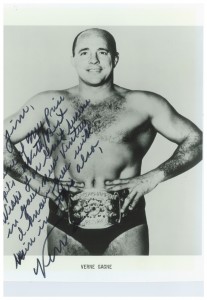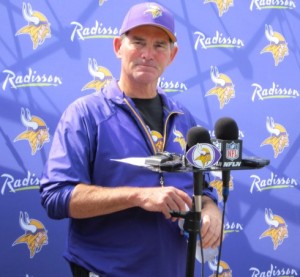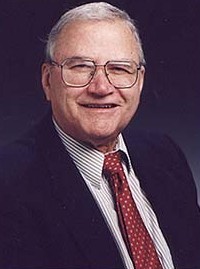Chicago swept the Wild 4-0 in the playoffs that ended last night at Xcel Energy Center. “We were chasing (from behind) every game,” said Wild coach Mike Yeo. “It was an incredible stat. We never had the lead.”
During the second round Stanley Cup playoff series the Blackhawks frequently used a lead to turn up their defense and make it more difficult for the Wild to score. Minnesota produced just seven goals in the series, once being shutout and in another game scoring one goal.
A year ago media and fans sat at Xcel Energy Center and recognized the team’s need for additional scoring. A common wish was for the Wild to acquire forward Thomas Vanek during the off season. That happened but during the playoffs this spring, including against the Blackhawks, Vanek didn’t score a goal.
The Wild’s offensive shortcomings weren’t just because of the 31-year-old former Gopher who had come home to help the Wild make a deeper playoff run. The series against the Blackhawks exposed the truth that Chicago had superior playmakers and scorers.
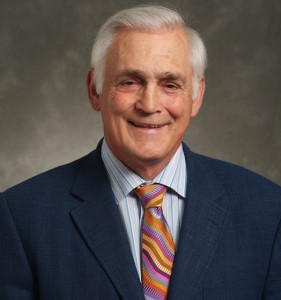
Former North Stars player and executive Lou Nanne acknowledged the Wild’s need for “more scorers” and that some Minnesota players didn’t do enough in the series. “They’ve got a couple superstars we don’t have,” Nanne said.
But Nanne said this season has been a success for the Wild and the 2015 team is the best in franchise history. There’s a nucleus to build upon while the Wild compete in what he described as the NHL’s best division (Central) and conference (Western).
After watching the Blackhawks’ impressive play against the Wild, Nanne said Chicago is his favorite to win the Stanley Cup.
Worth Noting
With yesterday’s win over the A’s, the Twins have now won 10 of their last 13 games. The Twins, 16-13 overall, are 6-1 in May and 12-5 this season at Target Field.
The Twins try to improve their 4-8 road record this weekend starting with tonight in Cleveland against the Indians. Mike Pelfrey, among the surprise contributors in the starting pitching, has a 2-1 record with a 2.63 ERA. Tonight he faces Cleveland’s Trevor Bauer, 2-0, 3.38 ERA.
During the weeks ahead Vikings rookies will have about 20 sessions to help them with life skills and behavior, according to Rick Spielman. The Vikings general manager said his organization offers diverse presentations ranging from all the negative things that can happen to players off the field, to the decision-making of buying or renting a car, or house. “We are very proactive,” Spielman said. “We’ve had guest speakers come in from all over the country that we feel can help educate our guys.”
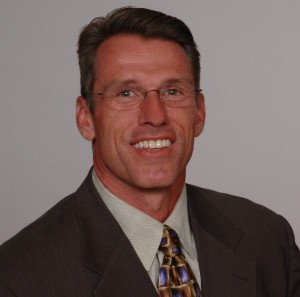
Prior to drafting players, the Vikings devoted a lot of time to psychological test results and background checks. Character played a major role in who the Vikings were willing to select. Spielman knows, of course, that one or more of the 10 rookies drafted last week will make mistakes but hopefully not career threatening errors. “Everybody does (make mistakes), but we try to be as diligent as we can in that area (prevention),” Spielman said.
Spielman will speak next Thursday at the CORES luncheon at the Knights of Columbus Hall in Bloomington, 1114 American Blvd. CORES is an acronym for coaches, officials, reporters, educators and sports fans. Reservations for the program (deadline is next Monday) can be made by contacting Jim Dotseth, dotsethj@comcast.net.
Spielman said his son J.D. Spielman, who will be a senior at Eden Prairie High School next year, has football offers from Iowa, Nebraska, Michigan and Minnesota. He potentially could be a slot back, defensive back or return specialist in college.
The Vikings will have 10 draft choices, 10 free agents and 40 other prospects in for rookie workouts this weekend including today. The club emphasizes inviting ex-college players from this area to workouts. Among the organization’s “finds” over the years have been cornerback and punt returner Marcus Sherels (Gophers) and wide receiver Adam Thielen (Minnesota State-Mankato).
Vikings marketing executive Steve LaCroix said the club has sold about 40,000 season tickets for the new stadium scheduled to open in 2016. The stadium capacity for football will be about 66,000 and eventually over 60,000 of the tickets sold could be season tickets. By state legislative mandate, some single game tickets at affordable prices must be made available for purchase.
The Vikings could have interest in some day hosting the NFL Draft that for decades was held in New York but this spring was staged in Chicago. Various fan activities drew about 200,000 people in Chicago.
Jerry Kill credits the late Dave Larson, who once gave $500,000 to the football program to pay for tutors, laptops and enhancements to the weight room, with playing a major role in improving academics. Kill said earlier this week his players have seven consecutive semesters of collective GPAs of 3.0 or better.
Larson was a University of Minnesota regent and philanthropist. His widow, Janis Larson, told Sports Headliners late last year she will provide $15 million for the football complex that is part of the Gophers’ $150 million plan to build and renovate athletic facilities.
Kill is Honorary Chair of the group trying to bring the College Football Playoff National Championship Game here. “They’re going to move that game around just like the Super Bowls,” Kill told Sports Headliners. “There’s not a finer place than the Twin Cities. They have the Super Bowl and Final Four (already booked), and should have the national championship game.”
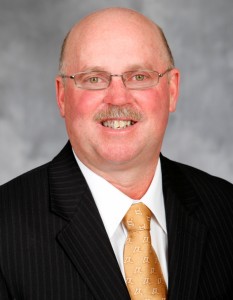
Kill said he hasn’t started lobbying efforts on behalf of a national title game for the new Vikings Stadium. Minneapolis is expected to bid for the 2020 game. “I am not that far along on all this,” said Kill, who agreed a few weeks ago to become Honorary Chair. Minneapolis and stadium promoters are aggressively pursuing national attractions for the domed multipurpose stadium that is expected to be among the most unique sports venues in the world.
Kill said all four of his players chosen in the NFL Draft are in “perfect” places for opportunities with their new teams. The four are tight end Maxx Williams, Ravens (second round); linebacker Damien Wilson, Cowboys (fourth round); running back David Cobb, Titans (fifth round); and safety Cedric Thompson, Dolphins (fifth round).
The 1950 NFL Draft was the last time Minnesota had four players selected in the first five rounds.
Former Gophers wide receiver Derrick Engel developed tendonitis in his knee awhile ago and that has slowed his pursuit of a pro football opportunity.
Congratulations to 74-year-old Bobby Bell who will be among University of Minnesota graduates receiving a degree next Thursday during ceremonies at Mariucci Arena. Bell, arguably the greatest Gophers football player ever, will graduate with a park and recreation degree. Friends and family will attend his graduation and celebrate at a party on campus Thursday evening. Among those expected at activities are former Chiefs teammate Willie Lanier and Bell’s son Bobby Bell Jr.
Bell was a two-time All-American tackle for the Gophers. He won the 1962 Outland Trophy, and during his three-year career at Minnesota the Gophers had a 22-6-1 record while playing in two Rose Bowls, and winning both a Big Ten and national championship.
Tom Obarski, the 2014 Concordia-St. Paul Division II AFCA All-American, has signed as a free agent placekicker with the Bengals.
Canterbury Park’s live horse racing season begins next Friday. The 70-day race meet is the longest since 1992. It’s estimated approximately $14 million in purses will be paid to horsemen, a record for the Shakopee racetrack. For the third consecutive season, Canterbury Park’s nearly 1,600 horse stalls will be at capacity.
Wednesday’s column about Verne Gagne prompted e-mails from readers with their own memories of local professional wrestling. A friend remembered going to the Minneapolis Auditorium as a youngster and bringing a squirt gun. “I sat at the end of an aisle with my arms folded. I then proceeded to squirt the Kalmikoff brothers as they walked by,” he wrote in an e-mail. “When they looked over, I was looking elsewhere with an angelic look on my face.”
Comments Welcome




